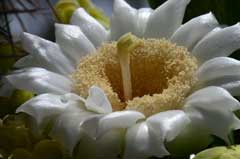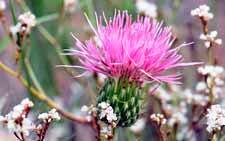Centaurea solstitialis, Yellow Star-thistle
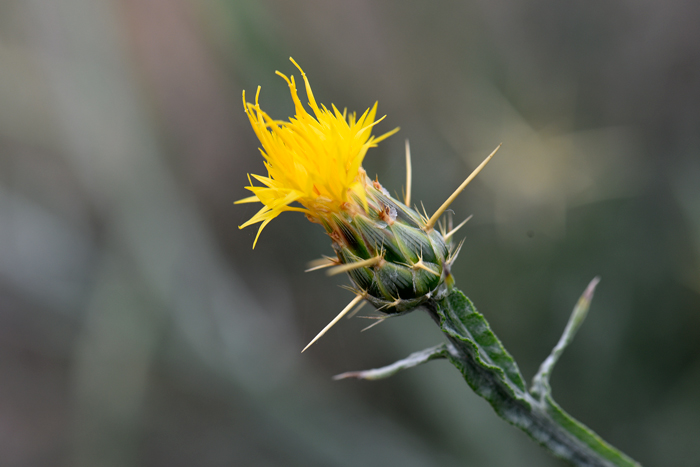
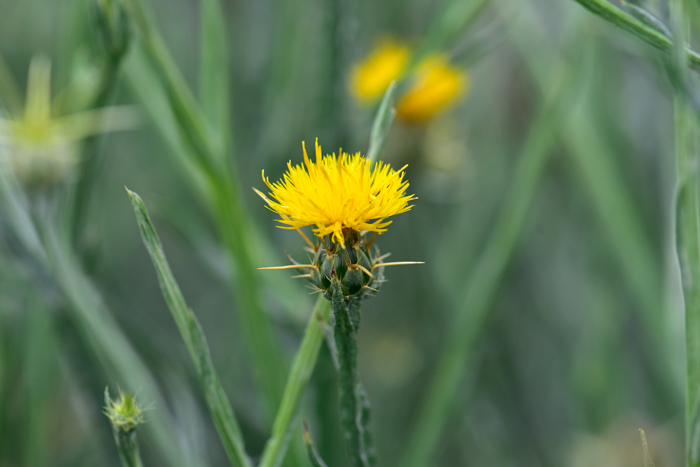
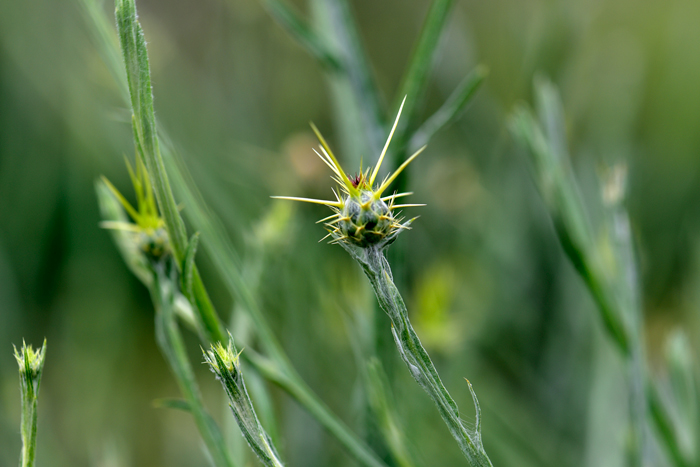
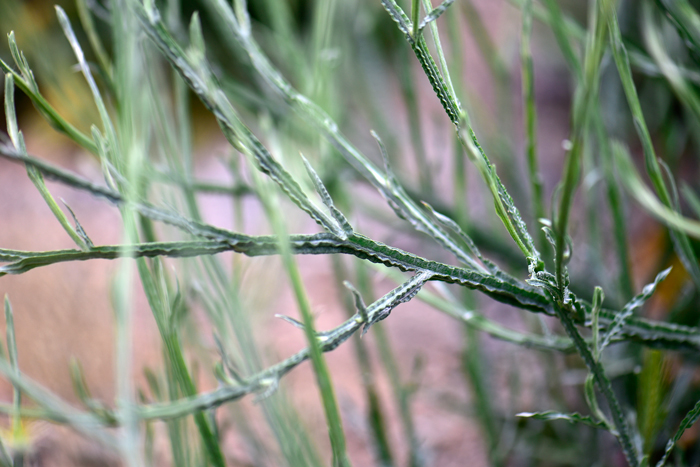
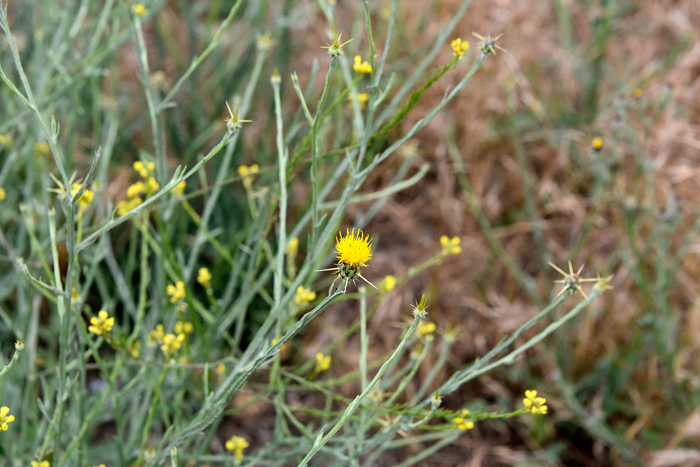
Scientific Name: Centaurea solstitialis
Common Name: Yellow Star-thistle
Also Called: Barnaby Thistle, Golden Starthistle, St. Barnaby's Thistle, Yellow Cockspur, Yellow Star Thistle, Yellow Starthistle
Family: Asteraceae, Sunflower Family
Synonyms: (Leucantha solstitialis)
Status: Introduced, naturalized in California; from Europe.
Duration: Annual or biennial.
Size: Up to 3 feet (1 m) tall or more.
Growth Form: Forb/herb; rounded bushy plants; plants are gray-green to blue-green and covered with a cottony wool giving the plants a whitish appearance, (tomentose); deep vigorous taproots; stems rigid, generally branching from the base; stems appear to be winged due to leaf-bases extending beyond the leaf nodes (decurrent).
Leaves: Leaves gray and covered in dense, soft, short hairs, sometimes woolly (tomentose), basal and cauline leaves, upper leaves with long wing-like appendages, leaf blades linear to oblong; leaves usually gone during flowering; leaf edges or margins pinnately lobed or dissected.
Flower Color: Yellow, bright yellow; flower heads discoid only; in general the flowering stalk (inflorescence) is a single (solitary) flower head although robust plants may support additional flowering heads from axils; the bracts or phyllaries surrounding the flowering heads each support sharp yellow spines, the terminal spine is quite stout and sharp; flower heads are glabrous to loosely cobwebby-tomentose; the fruit is a cypsela.
Flowering Season: May or June to October or sometimes year-round.
Elevation: Up to 6,500 (1,980 m) feet or higher.
Habitat Preferences: Waste places, roadsides, abandoned fields, pastures, recreational areas, disturbed grasslands, woodlands, not common in desert communities.
Recorded Range: Yellow Star-thistle is found throughout North America and most of Canada.
North America & US County Distribution Map for Centaurea solstitialis.
North America species range map for Centaurea solstitialis:
North American range map courtesy of Virginia Tech, Dept. of Forest Resources & Environmental Conservation
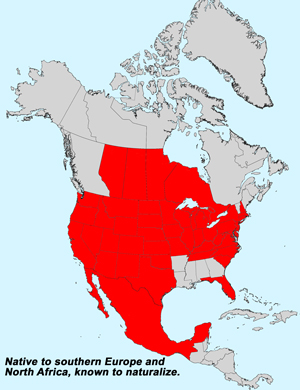
U.S. Weed Information: In North America Centaurea solstitialis can be weedy or invasive according to the following authoritative sources:
Plants included here may become weedy or invasive.
Invasive/Noxious Weed Information: In North America Centaurea solstitialis is listed as a Prohibited, Restricted, Quarantined, Regulated or Noxious Weed by AZ, CA, ID, CO, MT, NV, NM, ND, OR, SD, UT, WA.
Plants included here are invasive or noxious.
Wetland Indicator: Unknown Threatened/Endangered Information: Unknown
Genus Information: In North America there are 34 species and 38 accepted taxa overall for Centaurea. Worldwide, The Plant List includes 734 accepted species names and a further 1,150 scientific names of infraspecific rank for the genus Centaurea.
Members of the genus Centaurea are commonly known as Knapweeds.
The genus Centaurea was published by Carl Linnaeus in 1753.
In the Southwestern United States: Arizona has 8 species of Centaurea, California has 17 species, New Mexico has 8species, Nevada has 6 species, Texas has 4 species, Utah has 10 species. All data is approximate and subject to taxonomic changes.
Comments: Both Yellow and Maltese Star-thistle plants are aggressive exotic winter annual weeds. Yellow Star-thistle is thought to have had several introductions including from contaminated alfalfa seed (Medicago sativa). This species is thought to be toxic to horses if cumulatively ingested.
For a comprehensive thoroughly documented review of Yellow Star-thistle see the USDA USFS Fire Effects Information System, or FEIS.
Also see in Southwest Desert Flora; Maltese Star-thistle, Centaurea melitensis.
Centaurea solstitialis is reported used as cover and nesting by Least Bell's Vireo in California. It is also an important honey source plant in California and other western states.
In addition, the tiny wind-borne seeds of Centaurea solstitialis may possibly be eaten by small mammals.
The genus Centaurea was published by Carl Linnaeus in 1753.
The species epithet solstitialis (solstitia'lis:) relating to midsummer; refers to the summer or mid-summer or the solstice.
